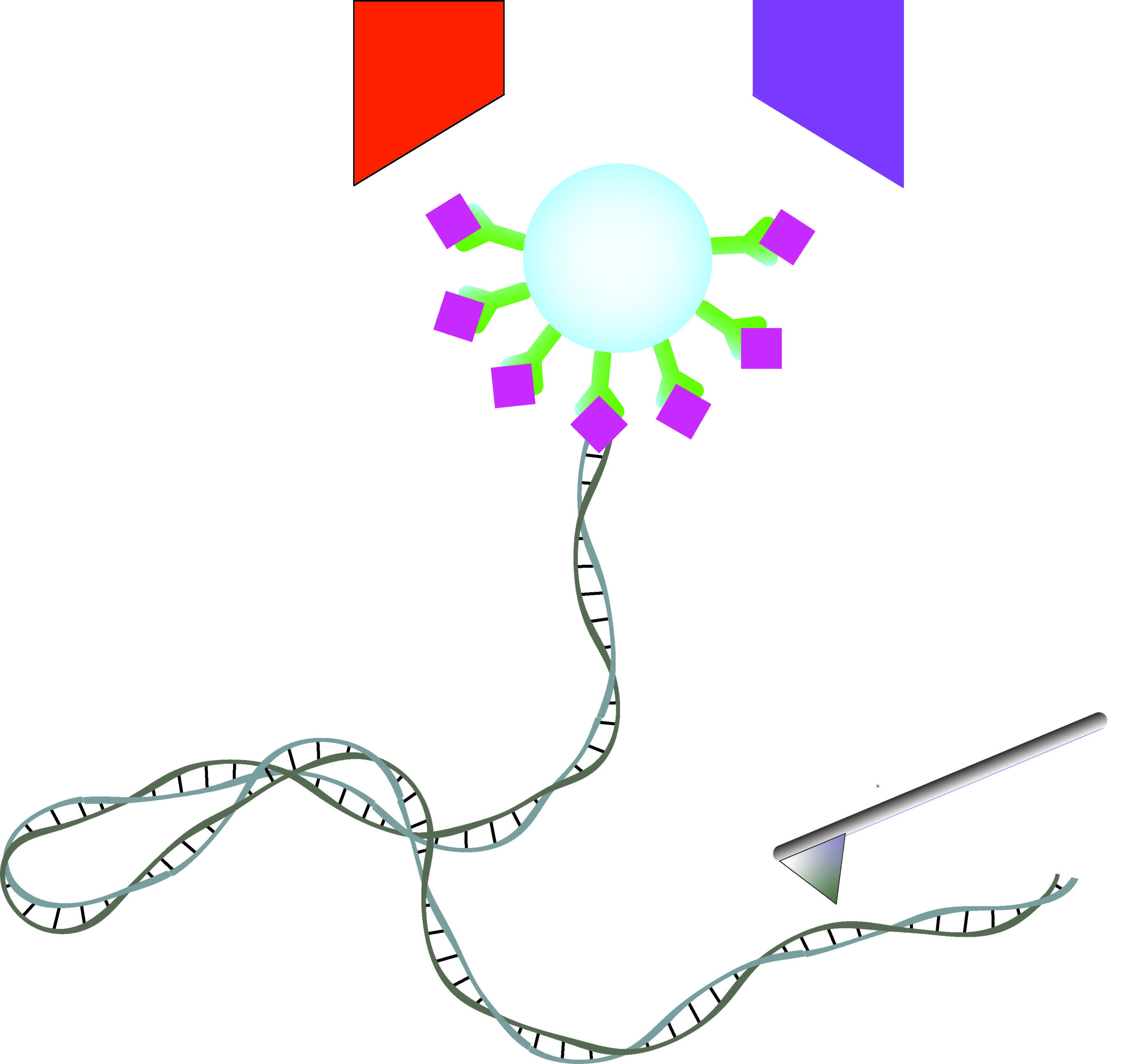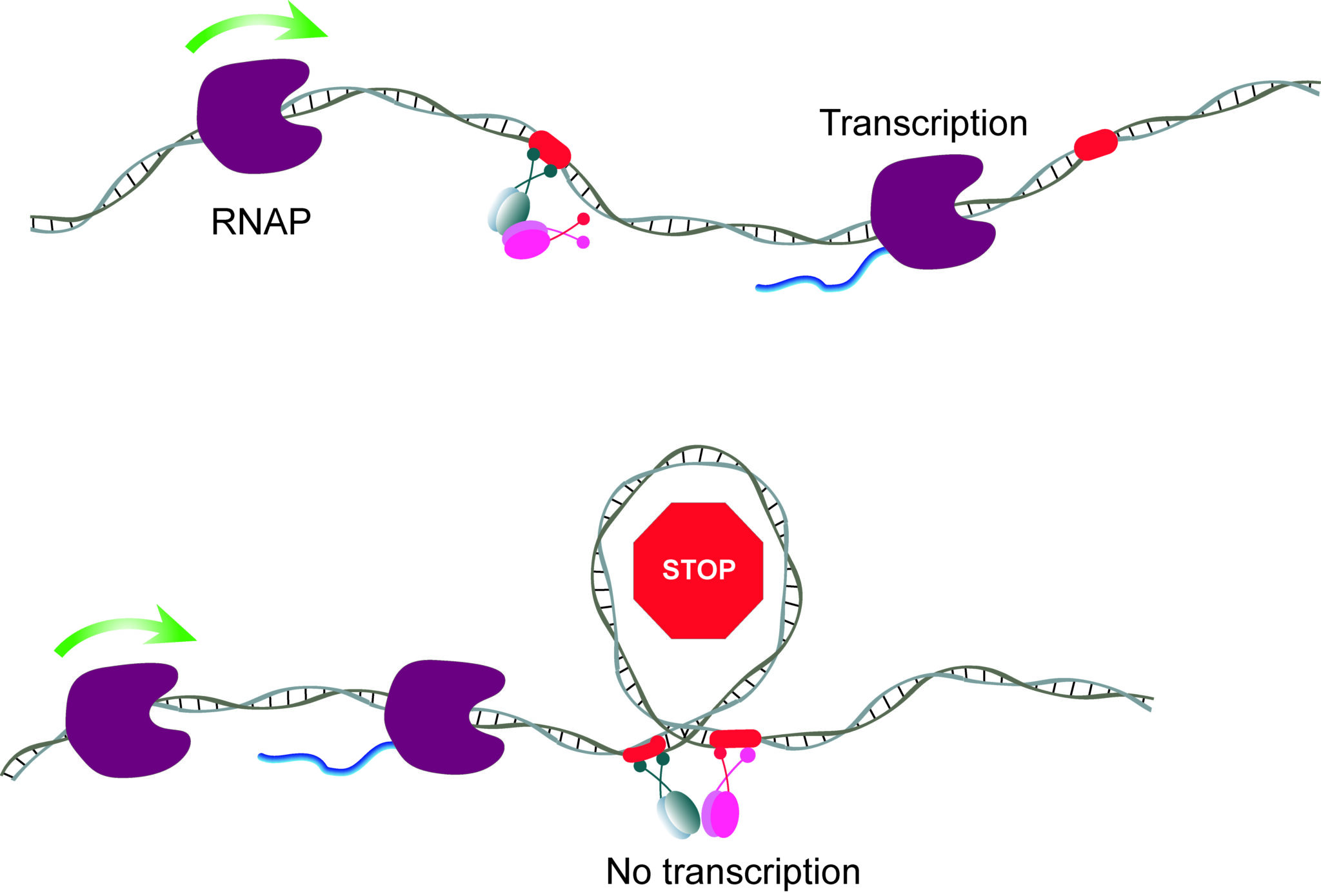Research
Transcriptional regulation is a fundamental process for life
Without proper regulation of transcription, no organism, plant or animal, eukaryotic or prokaryotic, can survive. We wish to understand the molecular mechanisms and the physical laws that underlie transcriptional regulation. This is a multifaceted problem that involves understanding the molecular motors that carry out transcription, or that affect it, as well as the interaction of DNA with regulatory proteins and the effect of forces at work in the cell/nucleus. In turn, DNA is not a passive template. Its mechanical properties influence the activity of motors, as well as the functional conformational changes induced by binding proteins. New techniques and methods of analysis need to be constantly developed to probe this complex interplay between template and machinery. Therefore, we are investigating the following four research areas.
Genetic Switches
Loop-based genetic switches represent a ubiquitous regulatory mechanism of transcription. These switches determine developmental choices, such as quiescence versus virulence in bacteriophages, or organ identity…

Transcription and related molecular motors
Understanding how RNA polymerases transcribe through transcriptional factors that decorate DNA without interfering with their physiological role is paramount to our…

DNA bending and torsional elasticity
DNA bending and torsional elasticity directly affect most, if not all, genome functions by altering the affinity of proteins for their DNA binding sites, and the likelihood of protein-protein or protein-DN…

Methods
Tethered Particle Microscopy method innovations are found in the following publications:
- Suleyman Ucuncuoglu, David A. Schneider, Eric Weeks, David Dunlap, and Laura Finzi, “Multiplexed…

